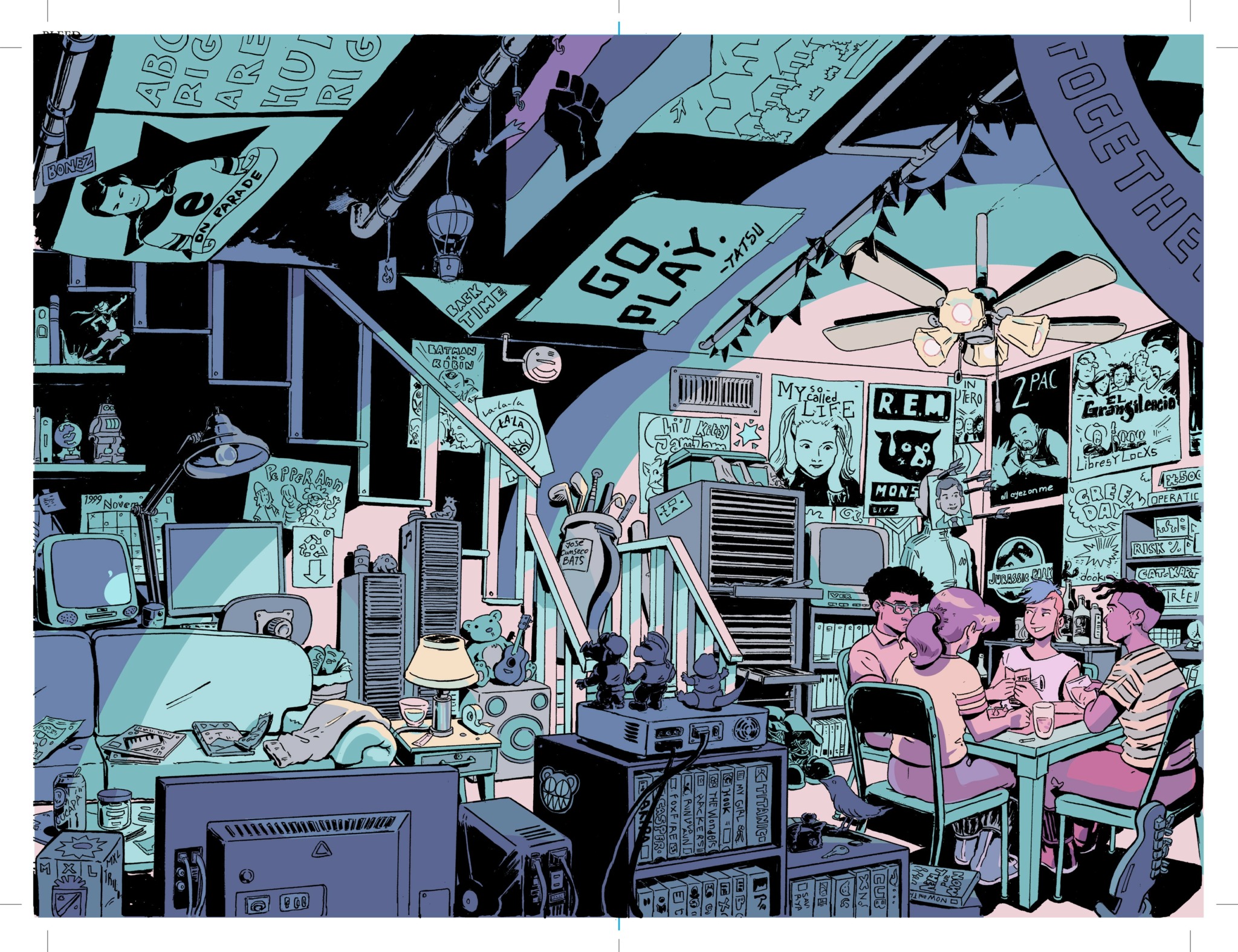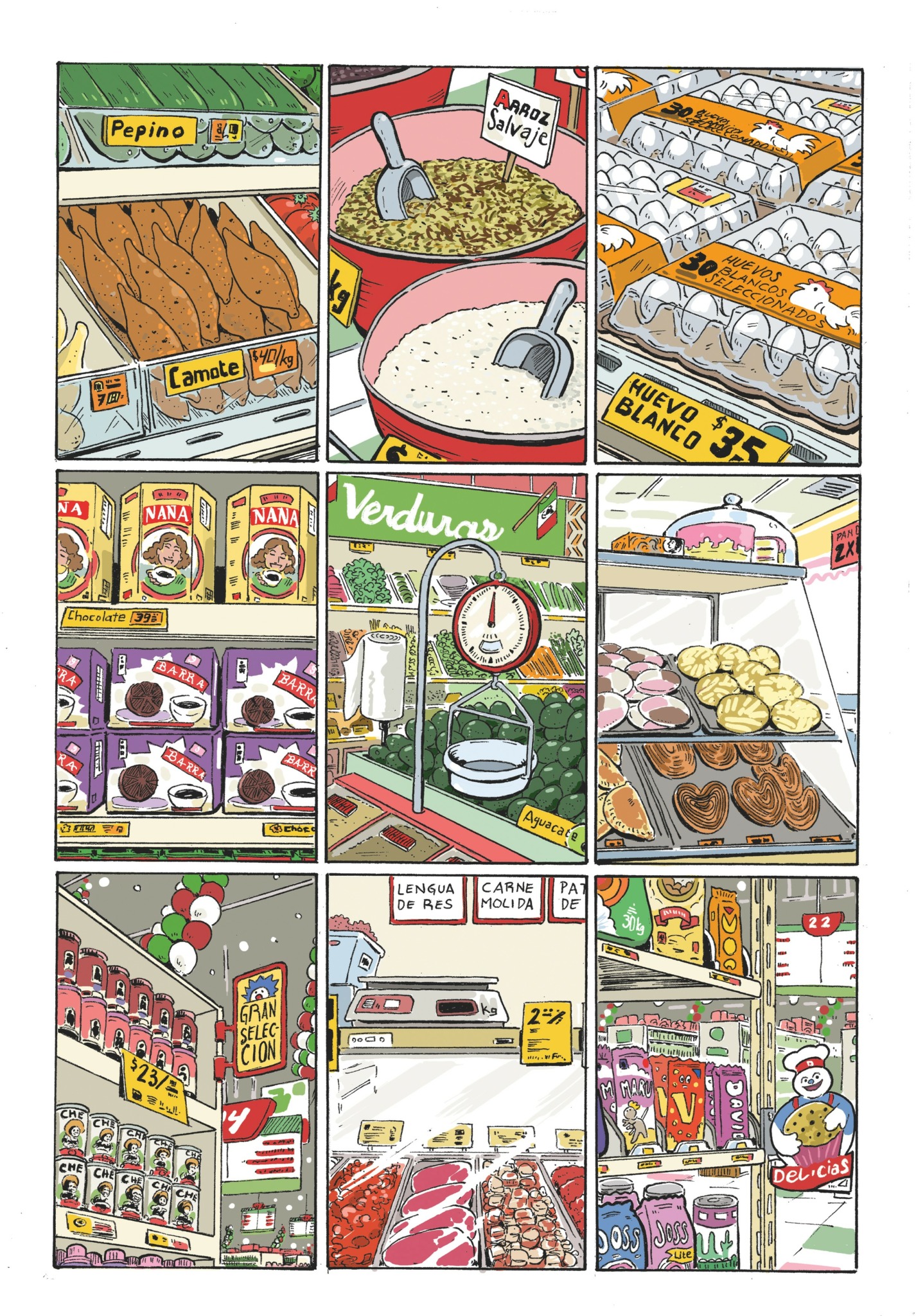We were lucky to catch up with Jose Pimienta recently and have shared our conversation below.
Alright, Jose thanks for taking the time to share your stories and insights with us today. We’d love to hear about a project that you’ve worked on that’s meant a lot to you.
In February of this year my graphic novel “Halfway To Somewhere” came out. And I think it’s the most personal book I’ve ever written. It’s not autobiographical, but most of the events in that book came from personal experiences. It’s the story of a nonbinary Mexican kid who moves from their hometown of Mexicali, Mexico to Lawrence, Kansas with their mom and younger brother while their dad and sister remain in Mexico. The inspiration for the story came from various fronts. One of them being a pilgrimage I took with two family members years before I wrote the book. Another inspiration was realizing that I’ve been living in the US for more than half of y life and what that was doing to my relationship to language and heritage. Another inspiration was recalibrating my perspective on my gender identity and my roles in my family. And lastly, I love walking long distances. If I find the time, hours upon hours of walking is one of my favorite activities.
With all those elements, I had to figure out how to tell a story that included all those elements. The result is a multilayered story about identity, language discrimination, assimilation, appreciation for cultural heritage and being open to moving forward in a new place to also call home.
As always, we appreciate you sharing your insights and we’ve got a few more questions for you, but before we get to all of that can you take a minute to introduce yourself and give our readers some of your back background and context?
Sure- Hi everyone- I socially go by Jo. I make comics and I write and draw my own stories, but I also collaborate with other writers. Actually, most of my comics catalogue is in collaboration with other authors. I don’t exactly know what’s the best starting point for my career, but a quick rundown is- by the time I was finishing school, I drew a graphic novel a friend of mine wrote. After that, I was working as a freelance storyboard artist for commercials and short films. Then, during a San Diego Comic Con I met Van Jensen and he was looking for someone to draw a story he had written. We hit it off and that’s how I drew “The Leg”. Because I drew “The Leg” (It takes place in the late 30s) a friend recommended me to a Dark Horse Comics editor for this other comic that also took place in the 1930s. After I finished that book, I wanted to draw a graphic novel that I would write. So I did “Suncatcher” (A YA comic) for myself with no publisher with the intention of self-publishing with a kickstarter campaign. After the campaign was successful, coincidently, a friend of mine who was an editor for Boom! had just been offered a new job and was looking for projects that were already made but that her new publisher would publish. We talked and “Suncatcher” went from being self-published to being published by Penguin Random House’s new graphic novel imprint Random House Graphic. While that was happening, I was also collaborating with Kel McDonald for a story they wrote for Iron Circus Comics. Since I was only drawing that comic, I had time to write something else, which is when I pitched my second written/illustrated comic “Twin Cities” to RHG. Ever since I’ve been working with different publishers either illustrating other writer’s comics or writing and drawing my own. This year, my third written/illustrated book “Halfway to Somewhere” came out, but so did two other books I drew that were written by other authors (Rachel G. Payne & Allan Wolf) I should also mention that while I draw comics, I also take on freelance work for storyboarding commercials, music videos, or other things like that.
What I am proudest is that for every project I get involved in, I try to make it as collaborative as possible. I try to learn from the people with most experience, I try to stay open to perspectives I hadn’t considered, and I do my best to remain confident on my abilities and remind myself that I got hired for a reason, so… approach with enthusiasm and ask with curiosity.
Do you think there is something that non-creatives might struggle to understand about your journey as a creative? Maybe you can shed some light?
Since “Halfway To Somewhere” is also about language- I want to take a stab at this. As someone who was collaborated with other creatives and many non-creative people, I think my perspective has shifted to thinking about it as “Creatives speak a language that non-creatives don’t and vice-versa”. So, communicating how being a creative is not always about labor, or about personality, but it is about how we communicate. Yes, lets assume we’re both speaking English, but words and their context take a different meaning. I’ve been in many meetings where in order to communicate the creative goals, I must do serious code switching in order to say something my creative peers would understand either in less, if not just different words. Nowadays when I talk to non-creatives, I ask different questions, because I want to make sure we’re understanding each other. I’ve also gotten less shy about asking for clarification or confirmation on what I heard.
What can society do to ensure an environment that’s helpful to artists and creatives?
This to me comes in multiple phases. The first and obvious one is: support creatives by buying their work, promote their events and promote their work. And that’s very helpful. But I also think it’s important to go more steps forward and advocate for the arts from a systemic approach. Advocate for more art in your city. Demand from your city officials to fund more arts programs. Demand more arts in the school curriculums and in after school settings. The thing about the arts is that they help us become better people. No society is artless. And yet, it’s always the arts that get cut when there’s budget discussions because they’re not viewed as “practical.” This approach is calculated and deliberate by those who are not interested in seeing community growth. So fight against that. Demand to see more art in your neighborhood. Demand to have more artistic programs. There’s countless definitions for Art, but at the center, I will argue that Making Art makes us Human, and therefore more likely to make us humane. Art brings communities together and makes us recognize the benefits of diverse points of view. So, yes, individual actions for individual artists is great, but ALSO we need collective action to make systemic impacts to a more creative community. Start local arts community and demand its growth. Art is organic- it requires nurturing.
Contact Info:
- Website: josepimienta.com
- Instagram: @thejoepi
- Linkedin: https://www.linkedin.com/in/jose-pimienta-9229212a9/
- Other: @jopi on Bluesky








Image Credits
The second image was colored by C.A.P. Ward and written by David Arnold. Every other image is either from comics I wrote and illustrated or sketches from my notebooks.


